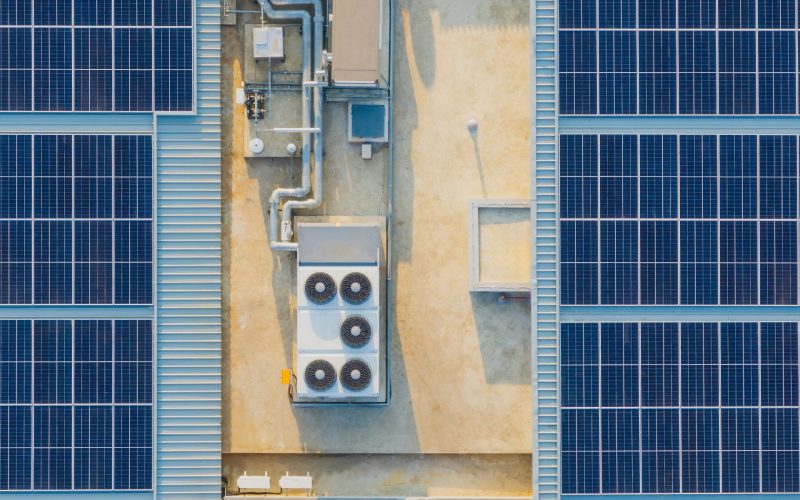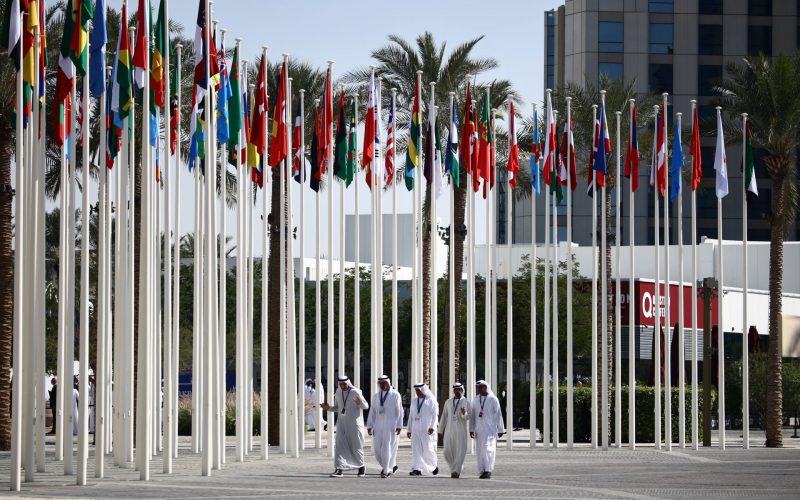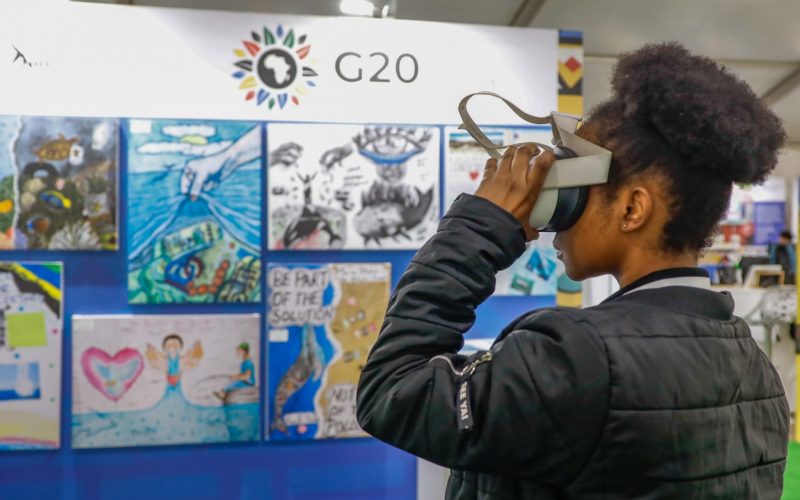Recommendations
- China and its partners in the Global South must create a conducive environment for technology transfer by ensuring that partner countries actively participate in and have ownership over joint projects, from policy formulation to project implementation and monitoring.
- Greater investments in data collection and improved reporting on green development efforts should be supported to counter misinformation and address adverse environmental impacts. Such enhanced transparency and accountability will help to maintain the integrity of technology transfers.
- It is necessary to dismantle technical barriers for Chinese enterprises to meet global environmental, social and governance standards, boosting competitiveness and long-term profitability.
- China and its partners must focus on impactful research and development partnerships that empower local partners and help to create locally led green technology innovation ecosystems in the Global South.
Executive Summary
China has become a global leader in green technology innovation and development, significantly contributing to the green transition both domestically and abroad. With the urgent need to tackle climate change threats to achieve sustainable development, the Global South is an important destination for China’s green technology transfer. It also represents an important market for its technological products. As its global footprint on green development expands, China’s endeavours to be a global leader in green development face significant challenges in terms of both narratives and on-the-ground realities. Addressing these challenges requires enhanced transparency, alignment with global standards and genuine partnerships with local innovation ecosystems.
Introduction
Climate change has become a formidable threat to the sustainability of our planet as well as people’s livelihoods. However, the impact of climate change is unequally distributed among developed and developing countries. Many countries that are still striving to achieve industrialisation are highly vulnerable to climate impacts and now face the threat of premature de-industrialisation. Most of these countries are in the Global South (including Africa, Southeast Asia and Latin America).1World Economic Forum, “The Climate Crisis Disproportionately Hits the poor. How Can We Protect Them?”, January 13, 2023. Promoting green industrialisation offers a pathway to tackle the negative consequences of climate change for these countries.2Sakiko Fukuda-Parr and Bhumika Muchhala, “The Southern Origins of Sustainable Development Goals: Ideas, Actors, Aspirations”, World Development 126 (2020).
As the largest country in the Global South, China has experienced rapid industrialisation and urbanisation over the past four decades. While delivering significant developmental outcomes, this rapid industrialisation has also resulted in environmental degradation. Pollution and environmental sustainability have become issues of great concern for China’s policymakers. Since 2015, through a series of strategies focusing on expedited high-quality, low-carbon development, China has achieved notable achievements in moving towards a green transition.3China Daily, “Explainer: What China’s Green Transition Means for the World”, Xinhua, March 13, 2023. Most recently, it has committed to peak carbon emission by 2030 and reach carbon neutrality by 2060.4“China Headed Towards Carbon Neutrality by 2060; President Xi Jinping Vows to Halt New Coal Plants Abroad”, UN News, September 21, 2021. Green technology research and development, application and promotion have played a major part in China’s green transition. It rapidly has become a powerful force in green technology innovation and deployment, domestically and internationally.5National Energy Administration, “China’s Green Energy Technology Benefits the World: Interviewed Expert: Li Qiang”, People’s Daily, December 10, 2021.
China has become a major powerhouse in the field of renewable energy, leading the global energy transition. Its investment in clean energy has ranked first globally for many consecutive years, and its installed capacity of hydro power, wind power and photovoltaic power generation has also been in a leading position, which means the whole industrial chain is advancing in tandem.6“China-Africa Clean Energy Cooperation Is Gaining Momentum”, Xinhua News, May 10, 2022. This technological advancement, motivated initially by the need to address domestic pollution challenges, has become a new engine of China’s development cooperation with other countries in the Global South. With the urgent need to tackle climate change threats to achieve sustainable development, the Global South is an important destination for China’s green technology transfer. It also represents an important market for its technological products, as well as a space for exerting geopolitical influence.7“Transcript of the Ministry of Ecology and Environment’s October Regular Press Conference”, China Environment News, October 30, 2023. Through aid, trade and investment, China has successfully positioned itself as a key player in addressing climate change challenges in the Global South. For example, China has established a CNY8Currency code for the Chinese yuan. 20-billion South–South Climate Cooperation Fund (SSCCF). This fund is aimed at enhancing climate change mitigation and adaptation efforts in developing countries. Additionally, China’s annual spending on South–South climate cooperation is approximately $72 million, which is used to support a range of projects, from equipment donations to more comprehensive low-carbon development projects.9“Ministers Highlight South-South Cooperation, China’s Role at UN Climate Conference”, Xinhua, December 8, 2023. In adhering to the principles of South–South cooperation, there is a strong emphasis on mutual benefits. However, concerns about transparency, environmental and social impacts and China’s geopolitical motivations have influenced the progress of projects and shaped the image of China abroad.10“Ministers Highlight South-South Cooperation”. This policy briefing provides an overview of China’s engagement with the Global South in the field of green technology transfer under the framework of the SSCCF. Challenges and opportunities related to the effectiveness of this engagement are reviewed and specific recommendations are provided.
The Achievements and Modalities of China’s Green Technology Transfer in the Global South
Promoting green development has been prioritised in China’s international development initiatives; for example, the upgraded version of the Belt and Road Initiative (BRI).11Sarina Patterson, “The BRI at 10: A Report Card from the Global South”, Aid Data, March 26, 2024. Climate change and green development is one of the eight priority areas of the BRI.12Liu Zhenmin, “Demonstrating the Responsibility of Major Countries in Cooperating to Address Climate Change”, People’s Daily, June 5, 2024. Many BRI projects incorporate green technologies. For example, the construction of hydropower plants, solar farms and wind power installations in participating countries helps to increase the share of renewable energy sources in their national energy mix. These projects often involve the transfer of technology and expertise from China to the host countries, enabling them to leapfrog to cleaner and more sustainable energy production methods.13Liu Zhenmin, “Demonstrating the Responsibility of Major Countries in Cooperating to Address Climate Change”, People’s Daily, June 5, 2024. Through various financing mechanisms, such as the Silk Road Fund and collaborations with multilateral development banks, the BRI provides funding for green projects. This financial backing encourages the adoption of sustainable technologies by reducing the financial burden on developing countries. Different actors, including government agencies, universities and think tanks, state-owned and private companies, as well as international organisations, are all actively participating in this endeavour.
As of November 2023, China has signed 48 memorandums of understanding with 40 developing countries in the Global South to provide support in tackling climate change. The projects include the construction of low-carbon demonstration zones, climate change mitigation and adaptation projects, and capacity building of local personnel. For example, the China–Africa Clean Energy Technology Demonstration Centre in Kenya showcases clean energy technologies such as photovoltaic, wind power and biomass energy, and provides technical training and advisory services to African countries.14Qin Aning et al., “Analysis of the Development Trend of International Green Technology under the Background of Carbon Neutrality”, World Science and Technology Research and Development (2021). The China–Africa Green Development Fund provides financial support specifically for green technology projects in African countries.
In the Association of Southeast Asian Nations (ASEAN) region, China’s involvement in green development has been significant, with various projects aimed at enhancing environmental sustainability. The ASEAN Green Technology Demonstration Centre in Thailand focuses on demonstrating China’s green building, green transport, green agriculture and other technologies, providing a platform for technology exchange and cooperation with ASEAN countries.15“Overview: China-Africa Clean Energy Cooperation Promotes Green Development in Africa”, Xinhua News, April 15, 2022. Other notable initiatives include the establishment of low-carbon demonstration zones in Laos and Cambodia. Projects in Vietnam, Myanmar and the Philippines focusing on climate change mitigation and adaptation also support the exchange of technology and expertise, especially in areas such as environmental monitoring and renewable energy applications such as photovoltaic systems. Additionally, China has provided clean cookstoves and new energy vehicles to ASEAN members, representing a direct transfer of technology aimed at reducing carbon emissions. These cooperative efforts extend to research and education, with projects like China–ASEAN cooperation on mangrove research and low-carbon schools, which involve sharing knowledge and techniques that support sustainable practices.
China’s green technology cooperation integrates various international frameworks and focuses on technology transfer alongside capacity building.16ASEAN-China Centre, “China-ASEAN Agricultural Cooperation Has Broad Aspects – Record of the China-ASEAN Agricultural Cooperation Seminar”, February 15, 2023. Initiatives such as the establishment of a green finance study group under the G20 and the China–UN South-South Cooperation Programme on Green Technology Transfer highlight China’s efforts. These programmes facilitate the development and dissemination of green technologies by creating funds for research, development and demonstration projects. Since 2021, China has also intensified its collaboration with Pacific island countries, establishing centres and training programmes focused on climate change, which are vital for both technology transfer and capacity enhancement. These collective efforts underpin China’s strategic approach to fostering sustainable development through technological and financial support in the Global South.17Fatih Birol, “China’s Green Technology Promotes Global Energy Transformation”, People’s Daily, March 12, 2024.
Business participation is also an important feature of China’s green cooperation in the Global South. In Brazil, a joint venture focuses on electric vehicle production, transferring advanced assembly techniques and battery technology, which is coupled with training for local engineers. Biomass power generation technology transfer includes biofuel production innovations, promoting local energy self-sufficiency and sustainability. Similarly, in India, collaboration in wind power equipment manufacturing introduces precision engineering and blade fabrication technologies, fostering local expertise and employment. In South Africa, research and development efforts in carbon capture and storage are enhancing local
capabilities in greenhouse gas management.18Zhang Yafeng et al., “Analysis of the New Trend of International Technology Transfer Based on Multiple Institutional Logics”, Science and Technology Progress and Countermeasures 39, no. 8 (2022) These initiatives not only deliver advanced technologies but also establish local facilities and training programmes to ensure sustainable development and independence in managing these technologies.
China’s role in green technology transfer is reflected in its global trade and investment strategies. The export of Chinese photovoltaic modules to over 100 countries and regions, along with Chinese wind power equipment to more than 70 countries, exemplifies a robust strategy to disseminate sustainable technology across the globe. This technology transfer not only bolsters China’s green development credentials but also supports developing countries in increasing their utilisation of renewable energy sources such as wind power. These efforts enhance global energy security, promote environmental sustainability and facilitate the economic growth of recipient countries by integrating them into the global green economy. This strategic dissemination of technology ensures that innovations developed in China lead to widespread adoption and adaptation, contributing to global climate change mitigation efforts.19Energy Development and Policy, “Authoritative Release State Council Information Office: China Has Been the World’s Largest Photovoltaic Market for Eight Consecutive Years, and its New Energy Storage Installed Capacity Ranks First in the World”, October 27, 2021.
China’s green technology transfer is not limited to green energy and automotive sectors; green agriculture development has been an important part of its international development cooperation in green technology. The Juncao technology, for example, was developed by the National Engineering Research Centre of the Fujian Agriculture and Forestry University of China. It allows smallholder farmers to grow mushrooms from dried, chopped grass without cutting down trees and damaging the environment.
This technology has been promoted and applied in 17 countries in the Global South.20External Affairs and Communication, “Lin Zhanhui: Leading Juncao Technology to the World and Contributing to China’s
Foreign Aid and Poverty Alleviation ‘Brand’ Power”, Sohu.com, October 24, 2022. The transfer process typically includes training programmes for local farmers, which are conducted by Chinese experts who travel to these countries or host farmers in China for workshops. These training sessions cover cultivation techniques, the establishment of mushroom farms and sustainable farming practices that minimise environmental impacts.
Challenges Facing China’s Green Technology Transfer in the Global South
China is now a global leader in renewable energy investment, driven by its efforts to address climate change domestically and internationally. As its global footprint on green development has expanded, its endeavours to be a global leader in green development have faced significant challenges in terms of both narratives and on-the-ground realities. First, a win-win approach that simultaneously seeks to achieve both economic benefits and environmental sustainability is hard to accomplish. China’s strategy involves balancing the rapid economic growth of partner countries with the need to preserve their environmental integrity, a principle often reflected in its green technology transfer initiatives. In this context, technology transfer serves as a mechanism to achieve economic and environmental goals. By transferring green technologies such as renewable energy systems, waste management technologies or sustainable agricultural practices, China helps partner countries develop economically while adhering to environmental sustainability principles. This approach attempts to address critiques of ‘Green Mercantilism’,21Corinna Perini and Sahibzada M Usman, “Understanding China’s Green Strategy in the Global South”, Stratheia, January 20, 2024. where economic objectives might overshadow environmental concerns, by ensuring that the technologies provided lead to sustainable practices that do not exploit recipient countries’ natural resources. This integrated approach underscores the complexity of balancing economic benefits with environmental protection in global development strategies. Through technology transfer, China promotes a model of development that seeks to avoid the pitfalls of traditional industrialisation models, which historically have led to environmental degradation. Thus, technology transfer is not just about economic growth but also about building capacities that ensure long-term sustainability, aligning with the broader goals of China’s South–South cooperation initiatives.
Second, the gap between commitments and impacts is still large in the short term. The real-world application of China’s BRI has often fallen short of its environmental goals, with substantial impacts not fully aligning with initial commitments. Although the initiative pledges to enhance green development through projects like hydroelectric power plants and solar farms, evidence suggests these projects have not fully compensated for the environmental degradation and resource overuse that have occurred.
Critics argue that, despite the initiative’s stated objectives, the actual environmental sustainability and governance practices have fallen short of expectations.22Christoph Nedopil Wang, “Ten Years of China’s Belt and Road Initiative (BRI): Evolution and the Road Ahead” (Regional Outlook Joint Working Paper 76, Griffith Asia Institute and Green Finance and Development Centre, Queensland, 2023).
This mismatch raises questions about the effectiveness of the BRI in fostering a sustainable development path that balances economic growth with environmental conservation. Third, technical barriers in accounting and auditing principles have China lagging in environmental, social and governance (ESG) disclosure. Large-scale infrastructure projects have been associated with several socio-environmental issues, including community displacement, ecosystem disruption and conflicts over land rights and resource utilisation. In the context of technology transfer, these problems underline the necessity of improved governance structures that ensure technologies are transferred in a manner that is not only efficient but also responsible and sustainable. Addressing these technical and ethical shortcomings is crucial for enhancing the effectiveness of technology transfer processes, ensuring they contribute positively to sustainable development goals while respecting the environmental and social frameworks of the host countries. Fourth, geopolitical tensions and competition between China and Western nations significantly influence green technology transfer to the Global South. Host countries rapid economic growth of partner countries with the need to preserve their environmental integrity, a principle often reflected in its green technology transfer initiatives. In this context, technology transfer serves as a mechanism to achieve economic and environmental goals. By transferring green technologies such as renewable energy systems, waste management technologies or sustainable agricultural practices, China helps partner countries develop economically while adhering to environmental sustainability principles. This approach attempts to address critiques of ‘Green Mercantilism’,23Corinna Perini and Sahibzada M Usman, “Understanding China’s Green Strategy in the Global South”, Stratheia, January 20, 2024. where economic objectives might overshadow environmental concerns, by ensuring that the technologies provided lead to sustainable practices that do not exploit recipient countries’ natural resources. This integrated approach underscores the complexity of balancing economic benefits with environmental protection in global development strategies. Through technology transfer, China promotes a model of development that seeks to avoid the pitfalls of traditional industrialisation models, which historically have led to environmental degradation. Thus, technology transfer is not just about economic growth but also about building capacities that ensure long-term sustainability, aligning with the broader goals of China’s South–South cooperation initiatives.
Second, the gap between commitments and impacts is still large in the short term. The real-world application of China’s BRI has often fallen short of its environmental goals, with substantial impacts not fully aligning with initial commitments. Although the initiative pledges to enhance green development through projects like hydroelectric power plants and solar farms, evidence suggests these projects have not fully compensated for the environmental degradation and resource overuse that have occurred. Critics argue that, despite the initiative’s stated objectives, the actual environmental sustainability and
governance practices have fallen short of expectations.24Christoph Nedopil Wang, “Ten Years of China’s Belt and Road Initiative (BRI): Evolution and the Road Ahead” (Regional Outlook Joint Working Paper 76, Griffith Asia Institute and Green Finance and Development Centre, Queensland, 2023).
This mismatch raises questions about the effectiveness of the BRI in fostering a sustainable development path that balances economic growth with environmental conservation. Third, technical barriers in accounting and auditing principles have China lagging in environmental, social and governance (ESG) disclosure. Large-scale infrastructure projects have been associated with several socio-environmental issues, including community displacement, ecosystem disruption and conflicts over land rights and resource utilisation. In the context of technology transfer, these problems underline the necessity of improved governance structures that ensure technologies are transferred in a manner that is not only efficient but also responsible and sustainable. Addressing these technical and ethical shortcomings is crucial for enhancing the effectiveness of technology transfer processes, ensuring they contribute positively to sustainable development goals while respecting the environmental and social frameworks of the host countries. Fourth, geopolitical tensions and competition between China and Western nations significantly influence green technology transfer to the Global South. Host countries often face dilemmas, having to navigate between competing technology offers that may stall technology adoption. The portrayal of Chinese initiatives as tools for geopolitical influence can hinder the acceptance of these technologies, undermining the effectiveness of technology transfer. Conversely, competition introduces multiple technology options, spurring innovation and potentially enhancing the alignment of technologies with local needs. However, the spread of disinformation and negative framing can create mistrust, complicating international relationships and impacting the cooperative climate necessary for successful technology transfers. These dynamics underline the complex interplay of geopolitics and technology transfer in the realm of sustainable development. Last, limited local capacity is still the largest bottleneck in the sustainability of green projects. The sustainability of green projects, including those facilitated by China in the Global South, is often hindered by limited local capacity to fully operate and maintain advanced technologies.
This gap between the sophisticated technologies provided and local operational capabilities leads to a heavy reliance on external expertise. For instance, projects involving renewable energy technologies like solar panels or wind turbines require not only initial installation but also ongoing maintenance, which can be technically demanding. Local personnel may not always have the training or the technological background needed to manage these systems effectively, which can lead to underperformance or breakdowns. To overcome these capacity constraints, it is crucial to integrate capacity building into the initial phases of technology transfer. This involves not only providing the technology but also training local technicians and engineers in its maintenance and operation. Establishing local training centres or collaborating with local technical schools to create tailored educational programmes can help sustain these technologies without the need for ongoing external intervention. Such strategies ensure that the transfer of technology goes beyond mere installation and helps create a knowledge base within the community. Such a knowledge base can sustain these initiatives independently, thereby addressing one of the critical barriers to the success of green projects in developing regions.
Conclusion
For China to mitigate some of the risks of its green technology programmes in the Global South, it is essential that it and its partners in the Global South foster an environment conducive to technology transfer, with active local participation and ownership. China can also enhance its own transparency and the transparency of its transfers to the Global South through more effective data collection and regular reporting. This will counter misinformation and address adverse impacts on the environment as they appear. Dismantling the technical barriers that Chinese enterprises face in meeting global ESG standards will enable technology transfer between China and the Global South to become more sustainable and internationally accepted. Additionally, focusing on impactful research and development partnerships and empowering local actors will drive a locally led green technology innovation ecosystem in the Global South to accelerate the energy transition and foster sustainable and green development.








